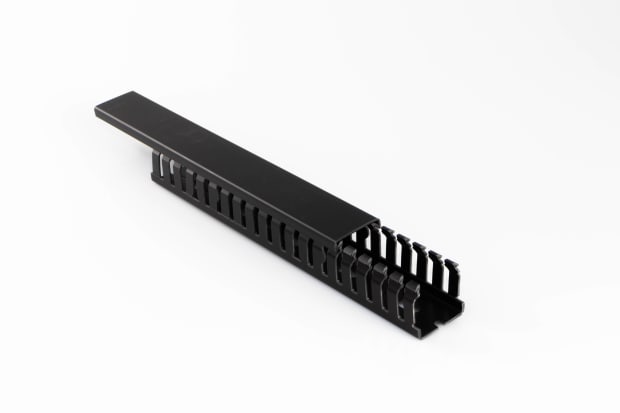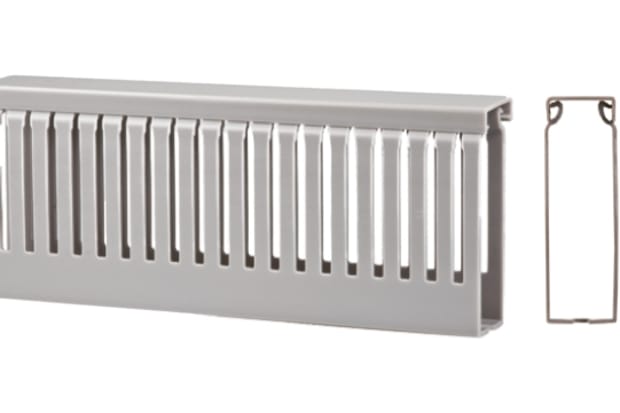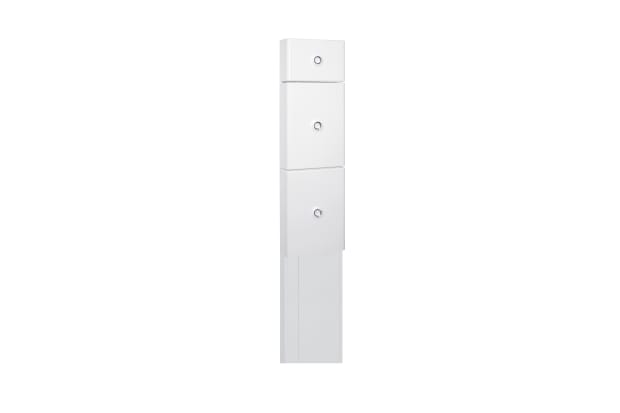- Published 9 Apr 2024
- Last Modified 9 Apr 2024
- 8 min
Comprehensive Guide to Cable Conduits and Trunking
Our conduit and trunking cable guide explains how and why they are used, and how best to go about fitting them.

What are Cable Conduits and Trunking?
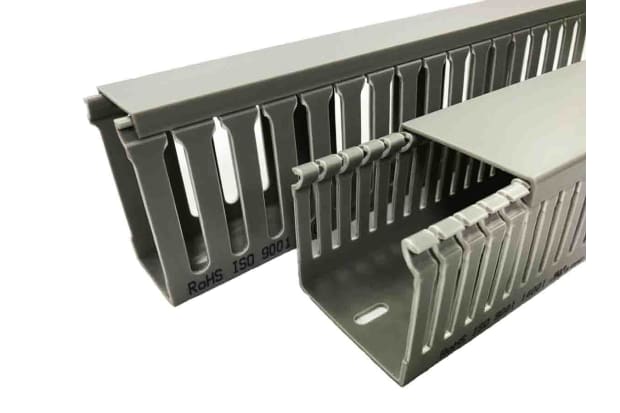
Cable conduits and trunking are essential components in the world of electrical installations and wiring systems. They are used to protect, organise, and conceal cables, wires, and other electrical components. In New Zealand, as in other parts of the world, these solutions are crucial for ensuring the safety, efficiency, and reliability of electrical systems in various settings, from homes and offices to industrial facilities.
In this guide, we will explore the different types of cable conduits and trunking, their applications, and the key considerations for installing them in New Zealand. Whether you are a homeowner, an electrician, or a facilities manager, this guide will provide you with the knowledge you need to make informed decisions about cable management and electrical installations.
Cable Conduits: Protecting and Routing Electrical Wires
Cable conduits, also known simply as conduits, are protective piping or tubing systems used to encase and route electrical wires and cables. They are typically made of materials like PVC, metal, or flexible corrugated tubing. Conduits come in a variety of sizes and types to accommodate different types and quantities of cables.
In New Zealand, cable conduits play a critical role in ensuring the safety and compliance of electrical installations. They are commonly used in both residential and commercial settings to protect wires from physical damage, moisture, and other environmental factors. Conduits also help to organise and streamline cable runs, making it easier to maintain and troubleshoot electrical systems.
Types of Cable Conduits
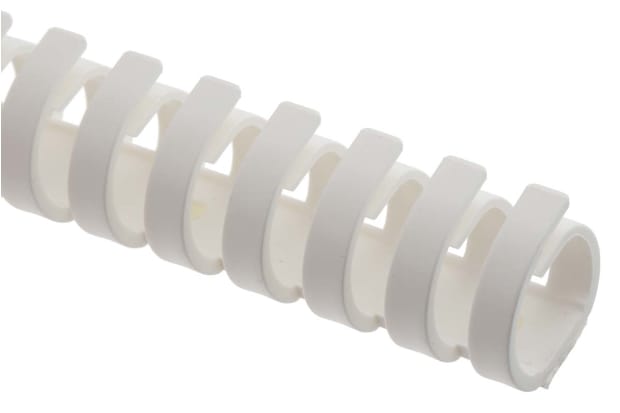
In New Zealand, there are several common types of cable conduits that are used in electrical installations. Each type has its own unique characteristics and is suitable for specific applications. Let’s take a closer look at the most popular types of cable conduits used in New Zealand.
Rigid Metal Conduits
Rigid metal conduits, often abbreviated as RMC, are among the most durable and secure options for cable protection. They are typically made of coated steel or aluminium, providing excellent protection against physical damage and environmental hazards. RMC is commonly used in industrial and commercial settings where robust cable protection is required.
Rigid metal conduits are known for their high structural integrity, making them suitable for applications where cables need to be protected in exposed or harsh environments. In New Zealand, RMC is often used in outdoor installations, underground cable runs, and areas where cables are at risk of damage from heavy machinery or other industrial equipment.
PVC Conduits
PVC conduits are a popular choice for cable protection in both residential and commercial settings. They are made of durable, lightweight polyvinyl chloride (PVC) and are available in a wide range of sizes to accommodate different types and quantities of cables. PVC conduits are easy to install, cost-effective, and resistant to corrosion and most chemicals.
In New Zealand, PVC conduits are commonly used for indoor electrical installations, surface-mounted cable runs, and applications where flexibility and ease of installation are important. They are also well-suited for use in damp or corrosive environments, making them a versatile choice for a wide range of applications.
Flexible Conduits
Flexible conduits, also known as flexible cable conduits or flexible tubing, are designed to provide protection for cables while allowing for greater flexibility and ease of installation. They are typically made of materials like PVC, aluminium, or stainless steel and are available in various configurations, including corrugated or braided designs.
In New Zealand, flexible conduits are often used in applications where cables need to be routed through tight spaces, around corners, or in areas that require frequent adjustments. They are commonly used in both residential and commercial settings, including in exposed cable runs, machinery installations, and areas where vibration or movement is a concern.
Cable Trunking: Streamlining Cable Management
Cable trunking, also known as wire trunking or cable ducting, is a cable management solution that provides an enclosed pathway for organising and protecting electrical wires and cables. Cable trunking is typically used in indoor electrical installations, providing a neat and streamlined solution for routing and concealing cables.
In New Zealand, cable trunking is widely used in both residential and commercial settings to ensure the safety, compliance, and aesthetic appeal of electrical installations. Cable trunking comes in a variety of materials, sizes, and types, making it a versatile solution for a wide range of applications.
Types of Cable Trunking
Floor Trunking
Floor trunking, as the name suggests, is designed to be installed within the flooring of a building. It provides a discreet and safe way to route cables across different areas of a building, making it a popular choice for office spaces, commercial buildings, and other environments where cable management needs to be unobtrusive.
In New Zealand, floor trunking is commonly used in office spaces, conference rooms, and other areas where a clean and professional appearance is important. Floor trunking is available in a variety of materials, including PVC and aluminium, and can be customised to match the flooring for a seamless integration.
Skirting Trunking
Skirting trunking is a type of cable trunking that is specifically designed to be installed along the base of walls, known as the skirting board. It provides a discreet and unobtrusive solution for routing and concealing cables in residential and commercial settings.
In New Zealand, skirting trunking is commonly used in homes, offices, and other spaces where maintaining a clean and aesthetically pleasing appearance is important. Skirting trunking is available in a range of materials, including PVC and aluminium, and can be painted to match the colour of the skirting board for a seamless and integrated look.
Aluminium Trunking
Aluminium trunking is a popular choice for cable management due to its lightweight, durable, and corrosion-resistant properties. In New Zealand, it is commonly used in a wide range of applications, including industrial, commercial, and residential settings.
Aluminium trunking is known for its sleek and modern appearance, making it a preferred choice for applications where aesthetics are important. It is available in a variety of sizes and configurations, providing flexibility for different types of cable installations.
How to Install Cable Conduits and Trunking
The installation of cable conduits and trunking requires careful planning and attention to detail to ensure that the electrical wiring is properly protected, organised, and compliant with safety regulations. While the installation process can vary depending on the specific type and application, there are some common steps and best practices to keep in mind.
Planning and Design
The first step in installing cable conduits and trunking is to carefully plan the layout and design of the system. Consider the specific requirements of the electrical installation, including the types of cables, the quantity of cables, and the locations where the cables need to be routed.
Create a detailed plan that outlines the pathways for the cables, the connection points, and any necessary supports or fixtures. Take into account factors such as building codes, safety regulations, and accessibility for maintenance and future expansions.
Material and Equipment
Once you have a clear plan in place, gather the necessary materials and equipment for the installation. This may include the conduits or trunking in the required sizes, as well as fittings, connectors, and supports. You will also need tools such as a hacksaw, conduit cutter, drill, and fasteners to secure the system in place.
Ensure that you have the right type and size of conduits or trunking for the specific cables you will be installing. Consider the environmental conditions of the installation area to select materials that are suitable for the application, such as choosing corrosion-resistant options for outdoor installations.
Routing and Installation
Carefully route the cables through the conduits or trunking according to your planned layout. Be mindful of the maximum fill capacity of the conduits or trunking to avoid overcrowding the system, which can lead to overheating and other safety issues.
Secure the conduits or trunking in place using the appropriate supports and fasteners. Ensure that the system is properly grounded if required by safety regulations. Pay attention to any bends, transitions, or elevation changes in the system to maintain a smooth and continuous pathway for the cables.
Compliance and Safety
Throughout the installation process, it is essential to adhere to safety standards and regulations. Ensure that the installation complies with local electrical codes and that all components are rated for the intended use. This includes using fire-rated materials in areas where fire safety is a concern and following guidelines for clearances and support spacing.
Conduct a thorough inspection of the installation to verify that all connections are secure, the system is properly grounded, and there are no exposed or damaged components. Test the system to ensure that it functions as intended and that there are no electrical faults or irregularities.
Cable Conduits and Trunking in New Zealand
Cable conduits and trunking play a vital role in ensuring the safety, organisation, and compliance of electrical installations in New Zealand. Whether used in residential, commercial, or industrial settings, these solutions provide a structured and secure pathway for electrical cables, wires, and components.
By understanding the different types, materials, and installation best practices, you can make informed decisions about cable management and electrical installations in New Zealand. Whether you are an electrician, a facilities manager, or a homeowner, prioritising the proper use of cable conduits and trunking is essential for creating safe, reliable, and efficient electrical systems.
